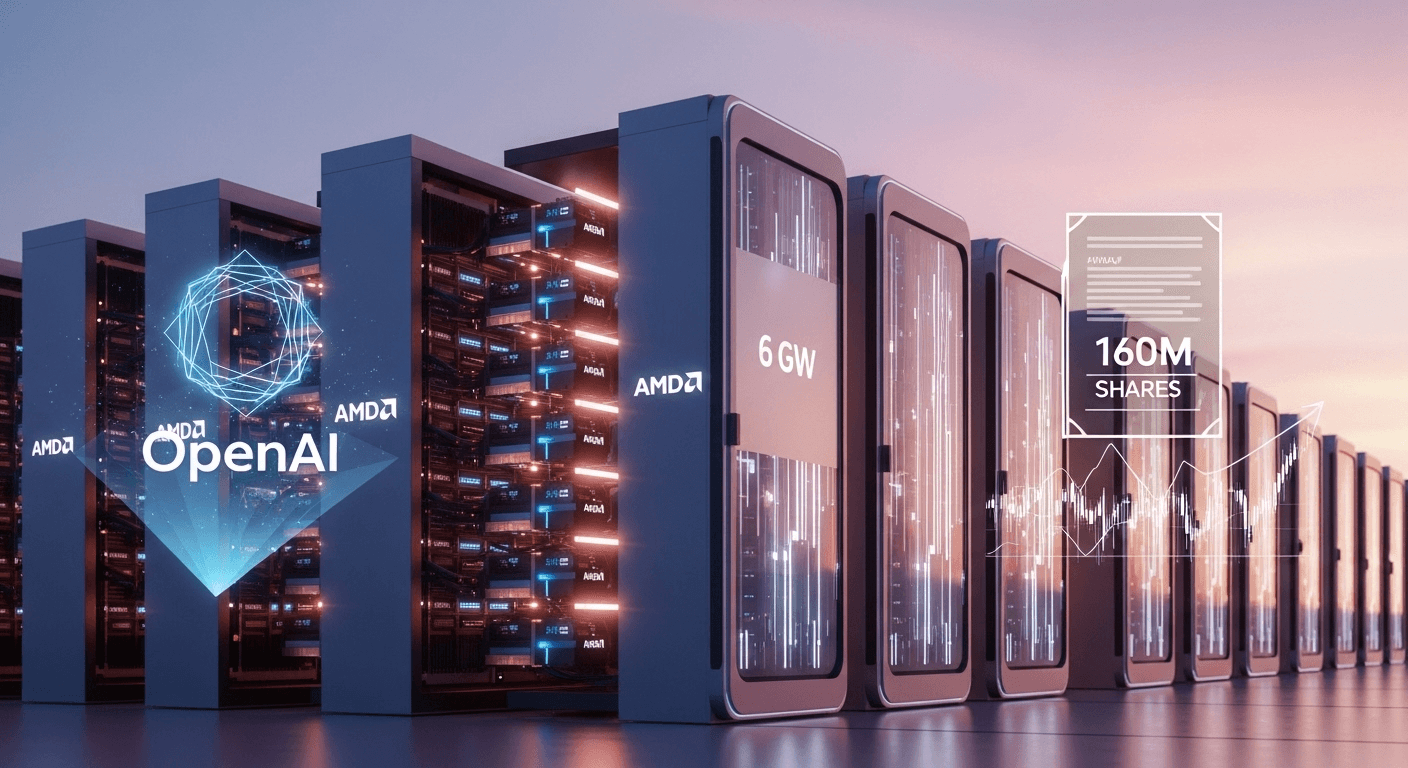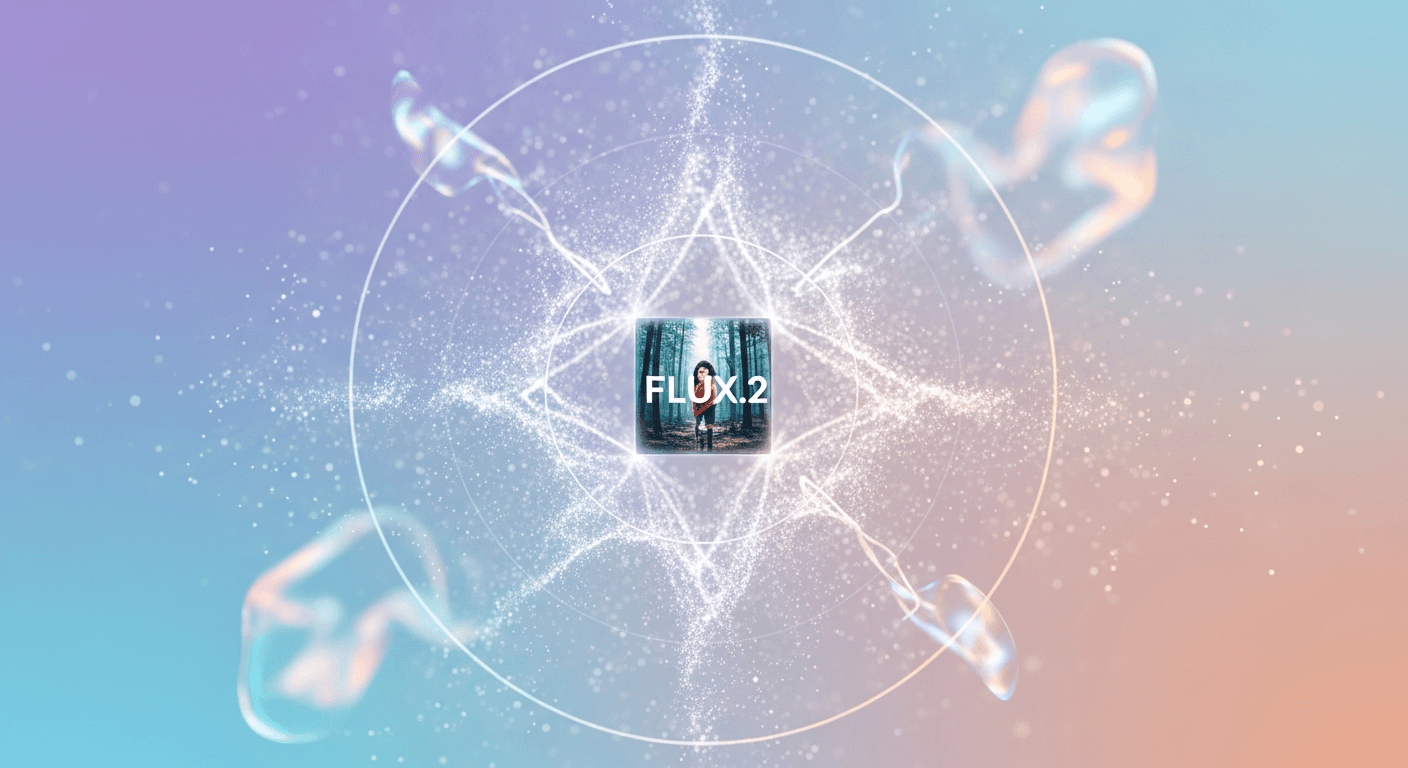
Inside OpenAI’s Significant AMD Partnership: 6 GW of GPUs, a Share Warrant, and the AI Landscape Shift
Note: All punctuation is normalized to plain quotes and hyphens for UTF-8 safety.
Inside OpenAI’s Significant AMD Partnership: 6 GW of GPUs, a Share Warrant, and the AI Landscape Shift
OpenAI has made one of the largest hardware commitments in technology history by securing a multi-year agreement to deploy AMD GPUs equivalent to 6 gigawatts of compute capacity. This deal also provides OpenAI the option to purchase up to 160 million AMD shares that vest as it meets specific rollout milestones. This bold move signifies OpenAI’s belief that the demand for artificial intelligence will continue to rise significantly, necessitating increased computing power to train and deliver its upcoming models.
This agreement represents more than just impressive numbers; it highlights a substantial shift in the competitive infrastructure landscape for AI. AMD is now positioned alongside Nvidia as a key player, while OpenAI enhances its supply chain as it expands its data centers throughout the United States. As OpenAI CEO Sam Altman stated, the world requires a lot more compute.
Overview of the Deal
Here’s a summary of the key points:
- Scope of Deployment: OpenAI plans to deploy AMD Instinct GPUs amounting to 6 gigawatts over the coming years.
- Initial Phase: The first wave involves a 1 gigawatt deployment scheduled to commence in the second half of 2026 using AMD’s Instinct MI450 series.
- Equity Incentive: AMD has granted OpenAI a warrant allowing it to purchase up to 160 million common shares, which will vest as certain deployment and performance milestones are achieved. The purchase price is set at $0.01 per share, with portions vesting throughout the 1 GW rollout and scaling up to 6 GW.
- Strategic Objective: This partnership allows OpenAI to diversify beyond Nvidia, with AMD becoming a primary computing partner across various GPU generations.
This is not just a speculative memorandum; it’s a definitive agreement, verified by SEC-filed documents and corresponding press releases from both companies.
The Importance of 6 Gigawatts
Six gigawatts is a staggering figure in the realm of data centers. Analysts have equated it to the electricity usage of several million households, emphasizing the energy demands associated with cutting-edge AI technology. For context, it’s been noted that 6 GW is sufficient to power approximately 5 million homes.
However, this 6 GW metric should primarily be understood as a deployment scale for compute clusters, which will address both training and inference workloads as they evolve. The first 1 GW phase will initiate in the second half of 2026, with additional waves planned as AMD advances its GPU roadmap.
Benefits for OpenAI
- Reduced Vendor Risk: Partnering with AMD as a second source helps mitigate reliance on a single vendor, stabilizes delivery schedules, and may enhance pricing leverage in contrast to solely relying on Nvidia.
- Advanced Systems for Large Models: AMD’s next-generation Helios architecture is designed to enable thousands of MI400-series chips to function as one cohesive system. OpenAI has publicly expressed plans to utilize AMD chips, with Altman affirming this collaboration alongside AMD’s CEO, Lisa Su.
- Aligned Financial Incentives: The share warrant creates a synergistic incentive where as OpenAI scales its AMD purchases to 6 GW, AMD’s performance could positively impact its share price, benefiting both parties.
Benefits for AMD
- Flagship Client: Securing OpenAI as a core computing partner boosts AMD’s credibility and demand signal within the AI ecosystem.
- Revenue Assurance: According to AMD’s CFO, this partnership is expected to generate tens of billions in revenue and enhance earnings. Following the announcement, AMD’s stock experienced a notable rise.
- Performance Parity with Nvidia: OpenAI’s commitment to utilizing AMD’s MI450 and future technologies gives AMD the opportunity to demonstrate its performance and reliability at the highest scales.
The Larger Context: OpenAI’s Data Center Expansion
OpenAI is not preparing for a modest increase in demand; it is gearing up for a future where the need for advanced AI continues to escalate year after year. In September 2025, OpenAI, Oracle, and SoftBank announced five new U.S. data center locations under the Stargate initiative, targeting nearly 7 GW of total capacity, with eyes set on achieving 10 GW and a $500 billion investment in U.S. AI infrastructure.
Earlier in 2025, OpenAI and its partners detailed an initial $100 billion commitment to Stargate, featuring a flagship campus in Abilene, Texas, with further locations spread across various states. Updates have indicated substantial expansions in partnership with Oracle and SoftBank.
Reports indicate that Oracle is rapidly increasing capacity at the Abilene site, with initial structures already supporting OpenAI workloads, and additional facilities being planned to accommodate hundreds of thousands of GPUs. Nvidia has stated that initial Stargate clusters utilizing its next-generation Vera Rubin systems are set to be operational in the latter half of 2026.
The AMD partnership fits into this broader picture as a complementary lane: OpenAI plans to ramp up Nvidia infrastructure concurrently while establishing an AMD-based foundation starting in 2026. This strategy ensures that OpenAI can continue to train new models and handle billions of daily queries without dependency on any single supplier. Altman affirmed OpenAI’s intention to further invest in Nvidia products as well.
Why the Timing is Crucial
The industry’s confidence stems from a straightforward observation: larger models trained on more computational power have consistently yielded significant performance improvements and new capabilities. This trend continues to fuel substantial capital expenditure plans. OpenAI’s recent initiative is in line with that trajectory, as are similar mega-projects throughout the sector.
Conversely, cautious voices have raised concerns that infrastructure spending might outpace achievable end-user revenues. A widely discussed analysis highlights an estimated $400 billion in AI infrastructure spending this year, juxtaposed with only about $12 billion in annual consumer AI revenues in the U.S. This discrepancy indicates a potential challenge in monetization.
Collectively, these perspectives clarify OpenAI’s approach: aggressively increase compute capacity to remain at the forefront while diversifying hardware and expediting deployments to sidestep bottlenecks.
A Quick Hardware Primer
For those unfamiliar with GPU model numbers, here are the key takeaways:
- MI450 Timeline: AMD’s Instinct MI450 series will support the first 1 GW phase starting in the latter half of 2026.
- Rack-Scale Architecture: AMD’s Helios system is designed to operate as a single, enormous compute engine, crucial for training large models with extended contexts.
- Competing Systems: Nvidia’s upcoming Vera Rubin racks will adhere to a similar rack-scale design and are anticipated to launch around the same time, giving OpenAI at least two contemporary platforms to choose from and balance.
For developers and data professionals, this means that future clusters will resemble unified supercomputers rather than traditional server fleets, with software stacks that consolidate thousands of accelerators into a singular target. This advancement will facilitate longer contexts, increased memory, and more efficient training sessions.
Potential Challenges Ahead
Scaling does not come without obstacles. Several risks could complicate or postpone the rollout:
- Power and Permitting: Building out substantial gigawatt capacity requires access to power, substation upgrades, and compliance with local cooling regulations. Timelines may be pushed back if utility projects encounter delays.
- Supply Chain Coordination: Even with multiple suppliers, bringing millions of cutting-edge GPUs online is a complex interplay of foundry supply, memory, networking hardware, firmware, and orchestration software.
- Monetization vs. Capital Expenditure: If AI spending from enterprises and consumers does not increase, investors may scrutinize the return on long-term commitments. Analysts have highlighted the current disparity between significant infrastructure investments and actual revenues.
- Competitive Landscape: This strategy relies on the assumption that larger still equates to better. Should more compact, efficient models or novel training approaches bridge the gap with leading systems, the advantages of massive clusters could diminish.
Nevertheless, OpenAI’s current commitment reflects a calculated strategy: first, establish the infrastructure, then swiftly iterate models and products to stay ahead of the competition.
Implications for Businesses and AI Developers
- Increased Reliability for Compute Access: Enterprises anticipating capacity can expect reduced wait times and enhanced availability with the introduction of a second major GPU provider starting in 2026.
- Decreasing Unit Costs Over Time: Competition is likely to drive pricing down and improve performance, benefiting both startups and large developers.
- Accelerated Model Development Cycles: With advanced rack-scale systems and multi-gigawatt clusters becoming available, anticipate shorter training durations and more frequent model revisions.
- Focus on Energy-Efficient Architectures: The extensive energy requirements of 6 GW-class deployments will necessitate ongoing attention to sustainability, including direct renewable energy procurement and innovative cooling and site selections.
Timeline: Key Milestones to Monitor
- 2H 2026: OpenAI’s first 1 GW AMD MI450 deployment kicks off. Stay tuned for early performance assessments and software updates.
- 2026 and Beyond: AMD Helios and Nvidia Vera Rubin rack-scale systems will start appearing in operational settings. Watch for cross-vendor benchmarking at scale.
- 2025 to 2027: Progress on Stargate sites will transition from construction to energization, with Abilene as the initial hub and new locations activating subsequently.
- Continuous Updates: Keep an eye on the AMD share warrant vesting milestones and any associated SEC filings.
Impact on the Competitive Landscape
Until recently, Nvidia has been the dominant force in AI compute, reinforced by CUDA and a well-established ecosystem. By securing a multi-gigawatt partnership with OpenAI, AMD gains an unprecedented opportunity to establish its credentials at scale. If AMD’s silicon, interconnections, and software deliver as promised, hyperscales and government AI clients will gain a valuable alternative. This shift could significantly influence budget allocations for AI initiatives in 2026 and 2027.
For OpenAI, diversifying suppliers similarly translates to diverse architectures. Training across different GPU families, networking setups, and rack-scale schematics could enhance resilience against supply chain disruptions, allowing for better workload optimization regarding cost-efficiency, reduced latency, and model performance.
Conclusion
OpenAI’s agreement with AMD is a strategic bet indicating that AI demand still has substantial room for growth. This partnership not only provides OpenAI with increased computing resources and options but also aligns it closely with a second top-tier chip provider. For AMD, this collaboration presents a prestigious client, visible revenue prospects, and a chance to demonstrate its competitiveness at the forefront of technology. However, the agreement also escalates the stakes surrounding monetization, energy use, and operational execution. Should this partnership flourish, the next generation of AI models could emerge faster, operate at lower costs, and reach wider audiences. Conversely, if it falters, the industry may find itself with excess data center capacity that customer demand cannot sustain.
Either way, the results will significantly influence the trajectory of AI throughout this decade.
Frequently Asked Questions
What is OpenAI purchasing from AMD?
OpenAI has committed to deploying AMD Instinct GPUs over multiple generations totaling 6 gigawatts, starting with a 1 GW deployment of the MI450 series in the latter half of 2026.
Why does the deal include an AMD share warrant for OpenAI?
AMD has provided a warrant empowering OpenAI to acquire up to 160 million shares at $0.01 each, vesting as OpenAI meets specified deployment and performance objectives, creating a win-win scenario for both parties.
Is OpenAI distancing itself from Nvidia?
No, OpenAI plans to increase its investments in Nvidia hardware alongside the AMD partnership. This collaboration broadens its supplier base and enhances capacity rather than replacing Nvidia.
How extensive is OpenAI’s overall data center plan?
As part of the Stargate initiative with Oracle and SoftBank, OpenAI’s partners have outlined nearly 7 GW of planned capacity so far, targeting 10 GW and $500 billion in U.S. investment going forward.
Is there enough demand to validate this scale?
That remains a pressing question. Many in the field believe that scaling laws will continue to be fruitful, while others highlight the gap between significant infrastructure spending and the currently modest consumer AI revenue, estimated at around $12 billion annually in the U.S. so far.
Thank You for Reading this Blog and See You Soon! 🙏 👋
Let's connect 🚀
Latest Insights
Deep dives into AI, Engineering, and the Future of Tech.

Tech and AI Briefing: Key Highlights from November 28, 2025
Discover the top tech and AI headlines from November 28, 2025. Key topics include Apple’s legal battle in India, SAP and Cohere’s sovereign AI efforts, OpenAI’s Mixpanel incident, and Alibaba’s latest AI glasses.
Read Article


